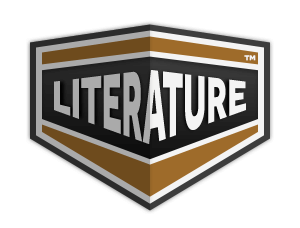Synthetic Biology and Genetic Engineering: Towards the Creation of a Living Insect.
The creation of a living insect involves intricate knowledge of genetics, molecular biology, developmental biology, and synthetic biology. These fields collectively provide the tools and understanding necessary for manipulating and engineering biological systems. This paper discusses the current state of these technologies, their applications, and the potential future advancements that could one day enable the creation of new life forms.
Creating a living insect is a concept that ventures into the realm of synthetic biology and genetic engineering, which is highly complex and currently beyond the scope of existing scientific capabilities. However, I can outline the general principles and current scientific approaches that are relevant to the idea of creating or significantly altering a living organism. 1. Understanding the Basics - To even consider creating a living insect, one must have a thorough understanding of several scientific fields: Genetics: Understanding DNA, genes, and genetic expression. Molecular Biology: Techniques to manipulate DNA and RNA. Developmental Biology - Knowledge of how an organism develops from a single cell to a complex multicellular organism. Synthetic Biology: Engineering biological systems for new purposes. 2. Current Technologies and Techniques - While creating a completely new organism from scratch is not feasible with current technology, significant advancements have been made in modifying existing organisms: Genetic Engineering - CRISPR-Cas9: A revolutionary technology that allows for precise editing of genes within an organism. It can be used to modify existing insects, potentially introducing new traits or behaviors. Gene Drive: A genetic engineering technique that promotes the inheritance of a particular gene to increase its prevalence in a population. This has been explored in insects like mosquitoes to reduce the spread of diseases like malaria. Synthetic Biology - Synthetic Genomes: Scientists have created synthetic genomes for simple bacteria, which can potentially be expanded to more complex organisms like insects in the future. BioBricks and Modular Biology: Building biological systems using standardized parts can lead to new organisms with desired traits. 3. Ethical and Practical Considerations Creating or significantly modifying living organisms raises many ethical and practical issues - Biosafety: Ensuring that any new organism does not pose a threat to the environment or human health. Bioethics: Addressing moral concerns about the creation and manipulation of life. Regulation: Compliance with laws and regulations governing genetic modification and synthetic biology. 4. Future Directions - Research is ongoing in several areas that might one day make creating a living insect possible: Whole Organism Synthesis: Efforts to synthesize complex multicellular organisms. Advanced Genome Editing: More sophisticated tools beyond CRISPR that allow for extensive and precise modifications. Artificial Cells: Creating artificial cells that can mimic the functions of natural cells and potentially assemble into complex organisms. Conclusion - While the idea of creating a living insect from scratch is fascinating, it remains a theoretical possibility at this point. Current scientific efforts are focused on genetic modification and synthetic biology approaches that modify existing organisms. The field is rapidly advancing, and future breakthroughs could bring us closer to achieving such ambitious goals. Creating DNA and RNA in a laboratory setting involves several well-established techniques in molecular biology. Here is an overview of the methods used to synthesize and assemble DNA and RNA: DNA Synthesis 1.Chemical Synthesis of DNA - DNA synthesis typically occurs through a process called phosphoramidite synthesis, which builds DNA sequences one nucleotide at a time. Steps: 1. Initiation - The process begins with a solid support bound to the first nucleotide. 2. Coupling- A phosphoramidite nucleotide, protected at the 5' end, is added to the growing DNA chain. 3. Oxidation - The new phosphodiester bond is oxidized to form a stable linkage. 4. Deprotection - The 5' protecting group is removed to allow the next nucleotide to be added. 5. Repetition - Steps 2-4 are repeated until the desired sequence is synthesized. 6. Cleavage and Deprotection - The completed DNA strand is cleaved from the solid support and fully deprotected. Applications - Chemical synthesis is used for creating short DNA sequences (oligonucleotides) up to around 200 bases. For longer sequences, synthesized oligonucleotides are assembled together. Polymerase Chain Reaction (PCR) - PCR amplifies specific DNA sequences from small initial quantities. Steps: 1. Denaturation - Heating the DNA to separate the strands. 2. Annealing - Cooling to allow primers to bind to the target sequence. 3. Extension - DNA polymerase extends the primers to form new DNA strands. 4. Repetition - The cycle is repeated 20-40 times to amplify the DNA. Applications - PCR is used to amplify specific DNA regions for cloning, sequencing, or analysis. 3. Cloning - Cloning involves inserting a DNA fragment into a vector (like a plasmid) and introducing it into a host cell (like bacteria) for replication. Steps: 1. Ligation - The DNA fragment is ligated into a plasmid vector. 2. Transformation - The recombinant plasmid is introduced into bacteria. 3. Selection - Bacteria with the plasmid are selected using antibiotic resistance markers. 4. Propagation - Bacteria are grown to produce large quantities of the DNA. RNA Synthesis In Vitro Transcription - In vitro transcription uses a DNA template to synthesize RNA. Steps: 1. Template Preparation - A DNA template with a promoter sequence (often from bacteriophage T7) is prepared. 2. Transcription Reaction The DNA template is mixed with RNA polymerase, rib.
Translation
Translate and read this book in other languages:
Select another language:
- - Select -
- 简体中文 (Chinese - Simplified)
- 繁體中文 (Chinese - Traditional)
- Español (Spanish)
- Esperanto (Esperanto)
- 日本語 (Japanese)
- Português (Portuguese)
- Deutsch (German)
- العربية (Arabic)
- Français (French)
- Русский (Russian)
- ಕನ್ನಡ (Kannada)
- 한국어 (Korean)
- עברית (Hebrew)
- Gaeilge (Irish)
- Українська (Ukrainian)
- اردو (Urdu)
- Magyar (Hungarian)
- मानक हिन्दी (Hindi)
- Indonesia (Indonesian)
- Italiano (Italian)
- தமிழ் (Tamil)
- Türkçe (Turkish)
- తెలుగు (Telugu)
- ภาษาไทย (Thai)
- Tiếng Việt (Vietnamese)
- Čeština (Czech)
- Polski (Polish)
- Bahasa Indonesia (Indonesian)
- Românește (Romanian)
- Nederlands (Dutch)
- Ελληνικά (Greek)
- Latinum (Latin)
- Svenska (Swedish)
- Dansk (Danish)
- Suomi (Finnish)
- فارسی (Persian)
- ייִדיש (Yiddish)
- հայերեն (Armenian)
- Norsk (Norwegian)
- English (English)
Citation
Use the citation below to add this book to your bibliography:
Style:MLAChicagoAPA
"Synthetic Biology and Genetic Engineering: Towards the Creation of a Living Insect. Books." Literature.com. STANDS4 LLC, 2024. Web. 22 Oct. 2024. <https://www.literature.com/book/synthetic_biology_and_genetic_engineering%3A_towards_the_creation_of_a_living_insect._3129>.




Discuss this Synthetic Biology and Genetic Engineering: Towards the Creation of a Living Insect. book with the community:
Report Comment
We're doing our best to make sure our content is useful, accurate and safe.
If by any chance you spot an inappropriate comment while navigating through our website please use this form to let us know, and we'll take care of it shortly.
Attachment
You need to be logged in to favorite.
Log In